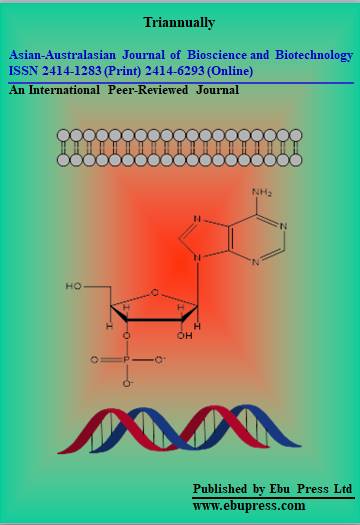Aysha Akter, Shohaly Begum, Md. Shemul Sheikh, Md. Erfanul Haq, Md. Iqbal Bahar, Md. Abdullah Miah and Md. Saiful Islam
Abstract
PDF
A case study in Tangail district, Bangladesh was carried out from September, 2013 to February 2014 to observe the trend of temperature with time series plot and the impact of temperature crop production. Questionnaire survey, field observation and FGD methods were used to collect primary data while a long duration (1990-2010) secondary data were collected from concerned institutes (DAE, BBS, BMD). Annual average of maximum temperature (Tmax) data were collected by using environmental multimeter from all upazillas (Sub-district level) including Madhupur Forest which was in line with the secondary data. During the year 1990 to 2011 the Tmax exhibits an increasing trend which is statistically insignificant (R2= 0.0044). The highest value in 1995 was 40.5 and the lowest 35.50C in 1990. A decreasing trend line also was discovered for relative humidity (RH), rainfall and sunshine hours (SH) from 1990 to 2011. However negative insignificant correlation was observed between all three parameters with temperature i.e. Rainfall, RH and SH. The field data were collected from 195 people (male and female) respondents. Negative correlation was observed in rice (R2= 0.071), wheat (R2= 0.049) and potato (R2= 0.010) while total vegetable production showed positive correlation (R2= 0.068). Nevertheless Maximum Production rate for rice (3.38 m.ton/acre), wheat (3.12m.ton/acre), potato (2.26m.ton/acre) and vegetables (18.55 m.ton/acre) was observed while Tmax ranged between 37.2-38.5 °C and dropped down after that in all four crops. Enforcement of environmental laws and policies, regular monitoring and mass awareness should be ensured for the proper management of our environment.



